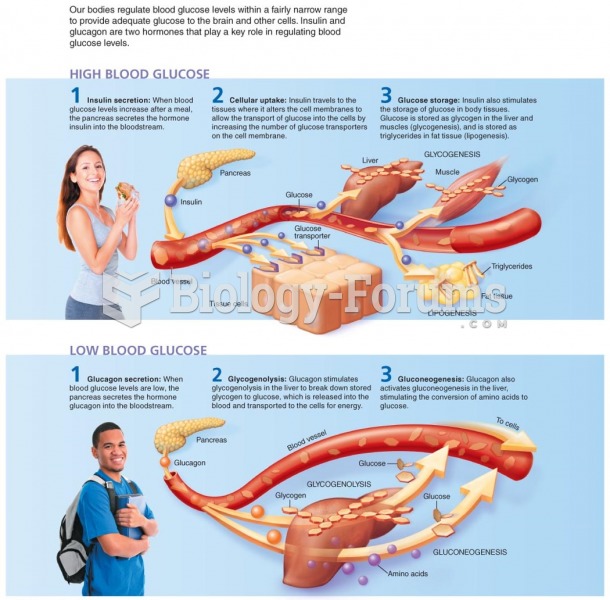|
|
|
Blood is approximately twice as thick as water because of the cells and other components found in it.
You should not take more than 1,000 mg of vitamin E per day. Doses above this amount increase the risk of bleeding problems that can lead to a stroke.
Congestive heart failure is a serious disorder that carries a reduced life expectancy. Heart failure is usually a chronic illness, and it may worsen with infection or other physical stressors.
Though newer “smart” infusion pumps are increasingly becoming more sophisticated, they cannot prevent all programming and administration errors. Health care professionals that use smart infusion pumps must still practice the rights of medication administration and have other professionals double-check all high-risk infusions.
Thyroid conditions cause a higher risk of fibromyalgia and chronic fatigue syndrome.
 Electrocardiography. (a) Electrodes are placed on the patient’s chest to record the electrical event
Electrocardiography. (a) Electrodes are placed on the patient’s chest to record the electrical event
 A lack of fuel flow could be due to a restricted fuel-pressure regulator. Notice the fine screen ...
A lack of fuel flow could be due to a restricted fuel-pressure regulator. Notice the fine screen ...





